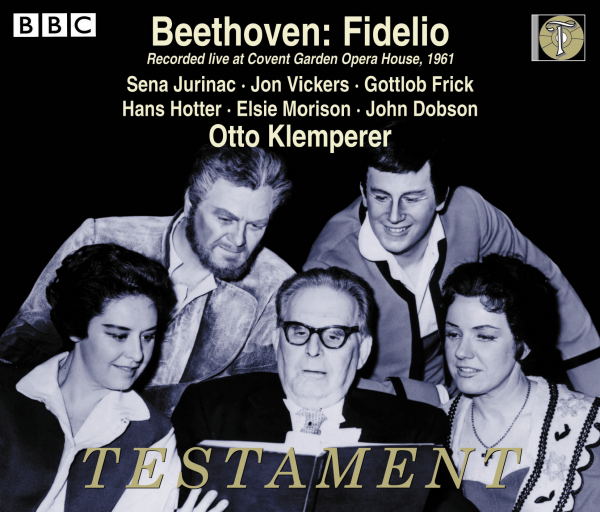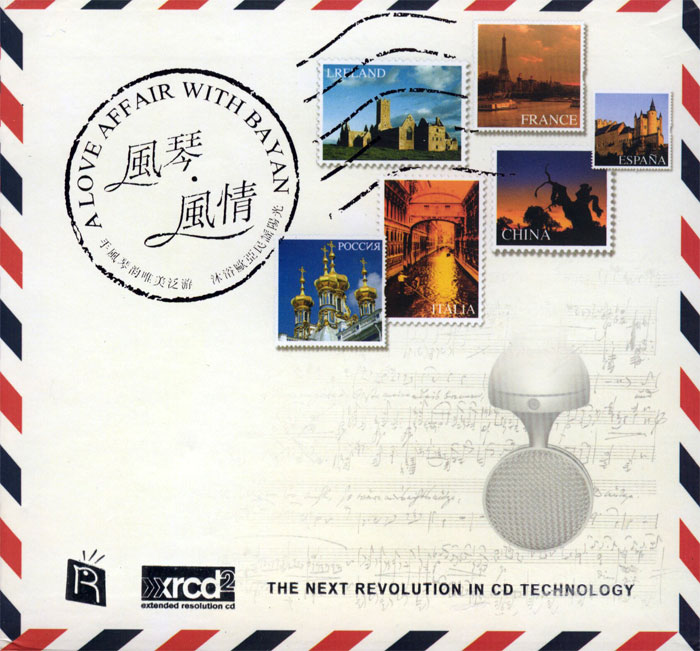Logowanie
Dlaczego wszystkjie inne nie brzmią tak jak te?
SpeakersCorner - OSTATNIE!!!!
RAVEL, DEBUSSY, Paul Paray, Detroit Symphony Orchestra
Prelude a l'Apres-midi d'un faune / Petite Suite / Valses nobles et sentimentales / Le Tombeau de Couperin
Samozapłon gwarantowany - Himalaje sztuki audiofilskiej
PROKOFIEV, Stanislaw Skrowaczewski, Minneapolis Symphony Orchestra
Romeo and Juliet
Stanisław Skrowaczewski,
✟ 22-02-2017
BARTOK, Antal Dorati, Philharmonia Hungarica
Dance Suite / Two Portraits / Two Excerpts From 'Mikrokosmos'
Samozapłon gwarantowany - Himalaje sztuki audiofilskiej
ENESCU, LISZT, Antal Dorati, The London Symphony Orchestra
Two Roumanian Rhapsodies / Hungarian Rhapsody Nos. 2 & 3
Samozapłon gwarantowany - Himalaje sztuki audiofilskiej
Winylowy niezbędnik
ClearAudio
Cartridge Alignment Gauge - uniwersalny przyrząd do ustawiania geometrii wkładki i ramienia
Jedyny na rynku, tak wszechstronny i właściwy do każdego typu gramofonu!
ClearAudio
Harmo-nicer - nie tylko mata gramofonowa
Najlepsze rozwiązania leżą tuż obok
IDEALNA MATA ANTYPOŚLIZGOWA I ANTYWIBRACYJNA.
Wzorcowe
Carmen Gomes
Celebrating the art and spirit of music - vol. 5 - Reference Songs
- CHCECIE TO WIERZCIE, CHCECIE - NIE WIERZCIE, ALE TO NIE JEST ZŁUDZENIE!!!
Petra Rosa, Eddie C.
Celebrating the art and spirit of music - vol. 3 - Pure
warm sophisticated voice...
SAMPLER - STS DIGITAL, Gregor Hamilton
Celebrating the art and spirit of music - vol. 2 - Love songs from Gregor Hamilton
...jak opanować serca bicie?...
SAMPLER - STS DIGITAL
Celebrating the art and spirit of music - vol. 1 - Leonardo Amuedo
Największy romans sopranu z głębokim basem... wiosennym
Lils Mackintosh
Celebrating the art and spirit of music - vol. 4 - A Tribute to Billie Holiday
Uczennica godna swej Mistrzyni
BEETHOVEN, Sena Jurinac, Jon Vickers, Gottlob Frick, Hans Hotter, Royal Opera House, Covent Garden, Otto Klemperer
Fidelio

BEETHOVEN Fidelio (Recorded Friday, 24 February 1961 at The Royal Opera House, Covent Garden, London) Sena Jurinac, Jon Vickers, Gottlob Frick, Hans Hotter, Elsie Morison John Dobson, Forbes Robinson, Joseph Ward, Victor Godfrey The Covent Garden Chorus The Covent Garden Orchestra Otto Klemperer Nawet teraz, 38 lat po śmierci Klemerera członkowie brytyjskich orkiestr grają według standardów ustanowionych przez tego genialnego dyrygenta. Człowiek, który na samym początku kariery zaimponował Gustavowi Mahlerowi wykonując jego scherzo z pamięci. Prowadził orkiestry w Los Angeles, Berlinie, Nowym Yorku, Philadelphii, Londynie. W 1937 pomagał w reorganizacji Pittsburgh Symphony Orchestra. Był związany również z operami w Hamburgu i Berlinie. W wielu miejsca występował gościnnie. Niezwykła osobowość, niezłomny charakter. Nawet, gdy cierpiał na powikłania związane z guzem mózgu nie unikał twórczej pracy. W 1951 roku wypadek na lotnisku w Montralu zmusił go do dyrygowania z krzesła. Żeby udowodnić swoje kompetencje wynajął własną orkiestrę, która zagrała wybrane przez niego utwory w Carnegie Hall. Próba była udana, ale Amerykanie nie dali się przekonać - Klemperer powrócił więc do Europy gdzie nadal koncertował - we Włoszech, Szwajcarii, oraz Niemczech. Postać niezwykle barwna, ciekawa, co objawia się szczególnie w jego nagraniach. Warto prześledzić tę historię. Wow! Apparently private recordings of this performance (or one given a few nights later) have been circulating for years; somehow I've missed them. But now the BBC has made this one available: February 24, 1961, the opening night of a new production. Otto Klemperer's 1962 studio recording (also with Vickers and Frick but otherwise different soloists) has long been the benchmark recording for this work. This set challenges it. As we have come to expect, tempos are broad. Even Marzelline's aria is leisurely, but it allows us to clearly hear the young girl's pining for her beloved Fidelio and domestic bliss; "Mir ist so wunderbar" is a moment properly frozen in time, with each character's concerns unmistakable. Rocco's "Gold" aria has a bounce and is so well delineated (and sung) that it gets applauded. Pizarro's aria also is not rushed, and its menace seems all the more pre-meditated as a result. The Prisoners' release is practically mystical. The dungeon's gloom in Act 2 rarely has been this pervasive, and the following events unfold frighteningly. The "Er sterbe" quartet is vicious in its intensity. Klemperer programs the Leonore Overture No. 3 between the act's scenes and the effect is (as always) catastrophic; I have skipped it on every playing after the first and the result is what it should be: we go from darkness to light in a moment. And the final chorus is a most remarkable release of emotions--sheer joy after such terror. Sera Jurinac is a soprano Leonore, and she's superb. A beat or two is skipped in her big aria but the effect is still one of noble rage, hope, and resolution. By Act 2 the character's stature is never in doubt and Jurinac's voice is a pillar of strength. Her empathy with the prisoner is palpable. If anything, Jon Vickers is better than on the EMI recording; his cry of "Gott" is less tortured than overwhelmingly sad and resigned, and he never misses a nuance (or a note) from then on. He always was a stage creature and here he's as vivid as he can be. Gottlob Frick (also on EMI) is a straightforward Rocco, and his delivery of the recitative (of which Klemperer has retained much) helps to round out the character. Hans Hotter's Pizarro is vicious and dangerous, and his snarling delivery is effective and brutal despite a severe wobble in the voice on sustained notes. Elsie Morison and John Dobson are a lovely (actually interesting) pair of youngsters, and Forbes Robinson is a good enough Don Fernando. As you might expect, the Covent Garden forces are splendid. The mono sound is a bit bright but otherwise very good, with the voices in fine balance with the orchestra. Even if you own the redoubtable EMI recording, this one will open your ears and heart anew: it's a portrait of exactly what Beethoven was aiming for. (Robert Levine, ClassicsToday.com) “Here is the first night of Otto Klemperer's legendary 1961 Fidelio, from the Royal Opera House, to challenge his noted studio set from a year later.This confirms the Achilles' heel of Walter Legge, EMI's leading mogul at the time, in his unwillingness to record live occasions, probably because he liked to have every aspect of a recording under his control. In this case there is more to it than that. Klemperer wanted, in the studio, to retain his Covent Garden cast; Legge preferred to make changes with two exceptions (Jon Vickers and Gottlob Frick). On the evidence of this magnificent issue, Klemperer was right. Not only are the singers, by and large, better equipped for their roles, but given the electricity of the occasion the conductor's interpretation is more vital (often faster tempi) and even more eloquent. For his own staging, Klemperer decided to include far more dialogue than is usually heard so that we have as much a play with music as an opera. The singers speak and act with such feeling and immediacy, most particularly Jurinac, Hotter and Frick, as to justify the added text. Add to that the dedication on all sides to Klemperer, and you can imagine why this was such a special occasion. Compared to Christa Ludwig on Klemperer's studio version, Sena Jurinac creates a more believable and vulnerable Leonore. Her heartfelt sympathy with the role is evident in every line she speaks and sings, most notably in key phrases in her duet with Rocco near the end of Act 1 and the melodrama in Act 2. Once past some first night nerves evident in 'Abscheulicher!' she proves an ideal Leonore. Vickers, even in these early days of his career, is inclined to sentimentalise his Florestan with scoops and lachrymose effects, but all is forgiven when he provides the heroic thrust and inner feeling which the part demands and which is so notably absent from the Florestan on the recent Rattle version. Frick's Rocco is, if possible, even more admirable than on the studio set, expressing the jailor's terrible dilemma in the kind of incisive, warm tones few other basses on disc match. It is incomprehensible that Legge preferred as Pizarro the too-comfortable sounding Walter Berry to Hans Hotter. Hotter, usually known for his noble roles, is here the epitome of evil, a threatening force of nature, his voice and diction full of menace so that he can be forgiven one or two wobbles in his aria. The young lovers are personably sung and enacted by Elsie Morison and John Dobson, and another Royal Opera stalwart, Forbes Robinson, is a dignified Don Fernando. There was a fuss at the time about Klemperer's inclusion of Leonore III, but he fully justifies it by his electrifying interpretation. He insisted on placing the wind in the middle of the orchestra spectrum, and the balance is improved throughout as a result. His reading overall has the stature and sense of the work's philosophical basis which will be familiar to those who know his discs of the symphonies.” (Gramophone Classical Music Guide)

























